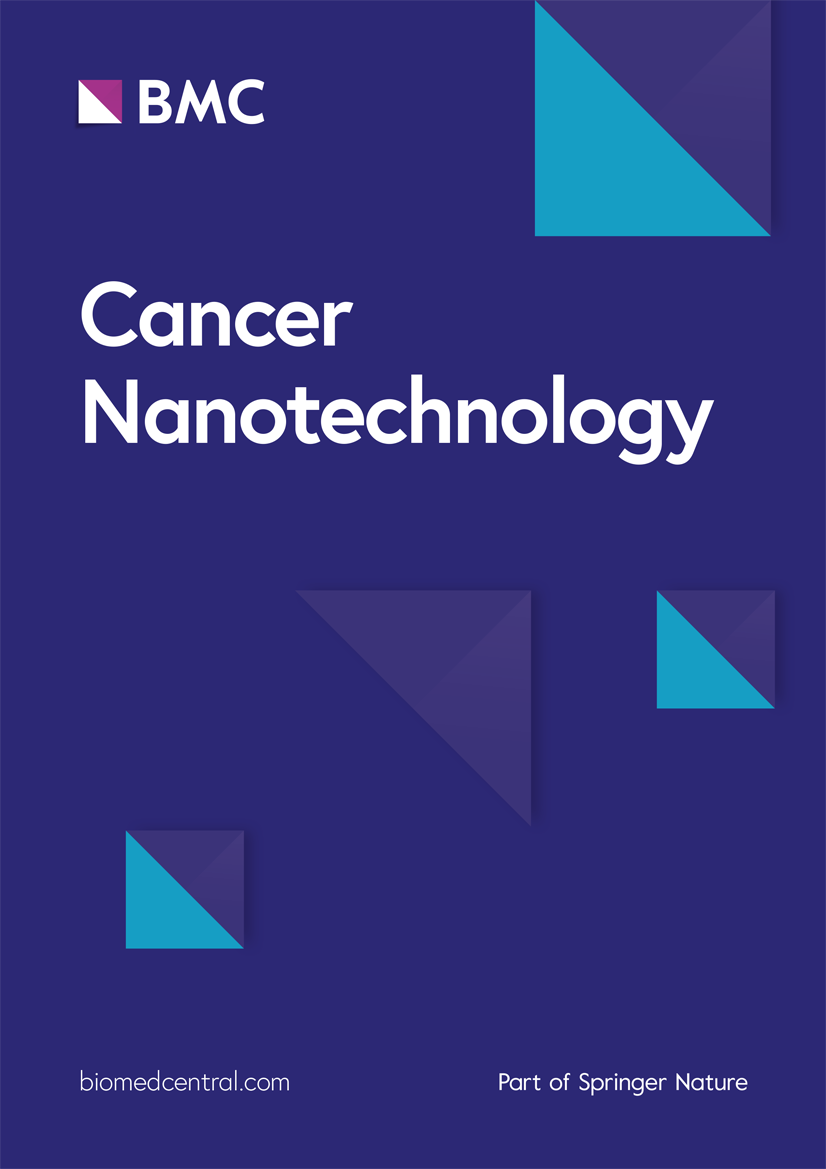介孔二氧化硅纳米技术:在增强癌症治疗学方面大有可为
IF 4.8
2区 工程技术
Q2 NANOSCIENCE & NANOTECHNOLOGY
引用次数: 0
摘要
介孔二氧化硅纳米粒子(MSNs)具有独特的表面积大、合成参数可调、易于功能化等优点,因此在过去十年中已成为癌症治疗学的重要平台。然而,MSNs 在癌症治疗学中的全部潜力还有待发挥。虽然 MSNs 可用于靶向给药和成像,但其有效性经常会受到一些因素的阻碍,如生物屏障、复杂的肿瘤微环境、靶点非特异性和单个功能化分子的无效性。本综述的主要目的是重点介绍肿瘤特异性、刺激响应型 "智能 "MSN 和基于 MSN 的多模式混合纳米平台等技术进展,这些技术有望克服这些局限性,提高 MSN 在癌症治疗中的有效性。本文广泛概述了癌症治疗中的 MSN 技术,概述了未来研究的主要方向以及这方面所面临的挑战。我们旨在强调 MSN 技术的生命力以及该领域当前研究和进展的相关性,通过提供更精确、更集中的治疗方法,提高临床疗效。本文章由计算机程序翻译,如有差异,请以英文原文为准。
Mesoporous silica nanotechnology: promising advances in augmenting cancer theranostics
Owing to unique facets, such as large surface area, tunable synthesis parameters, and ease of functionalization, mesoporous silica nanoparticles (MSNs) have transpired as a worthwhile platform for cancer theranostics over the last decade. The full potential of MSNs in cancer theranostics, however, is yet to be realized. While MSNs can be employed for targeted drug delivery and imaging, their effectiveness can frequently be hindered by factors, such as biological barriers, complex tumor microenvironment, target non-specificity and ineffectiveness of individual functionalized moieties. The primary purpose of this review is to highlight technological advances such as tumor-specific, stimuli-responsive “smart” MSNs and multimodal MSN-based hybrid nanoplatforms that have the potential to overcome these limitations and improve MSN effectiveness in cancer theranostics. This article offers an extensive overview of MSN technology in cancer theranostics, outlining key directions for future research as well as the challenges that are involved in this aspect. We aim to underline the vitality of MSN technology and the relevance of current research and advancements in this field to potentially enhance clinical outcomes through the provision of more precise and focused theranostic approaches.
求助全文
通过发布文献求助,成功后即可免费获取论文全文。
去求助
来源期刊

Cancer Nanotechnology
Pharmacology, Toxicology and Pharmaceutics-Pharmaceutical Science
CiteScore
5.20
自引率
1.80%
发文量
37
审稿时长
15 weeks
期刊介绍:
Aim:
Recognizing cancer as a group of diseases caused by nanostructural problems (i.e. with DNA) and also that there are unique benefits to approaches inherently involving nanoscale structures and processes to treat the disease, the journal Cancer Nanotechnology aims to disseminate cutting edge research; to promote emerging trends in the use of nanostructures and the induction of nanoscale processes for the prevention, diagnosis, treatment of cancer; and to cover related ancillary areas.
Scope:
Articles describing original research in the use of nanostructures and the induction of nanoscale processes for the prevention, diagnosis and treatment of cancer (open submission process). Review, editorial and tutorial articles picking up on subthemes of emerging importance where nanostructures and the induction of nanoscale processes are used for the prevention, diagnosis and treatment of cancer.
 求助内容:
求助内容: 应助结果提醒方式:
应助结果提醒方式:


